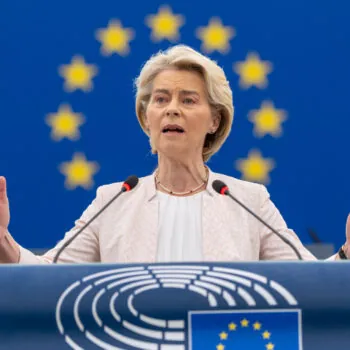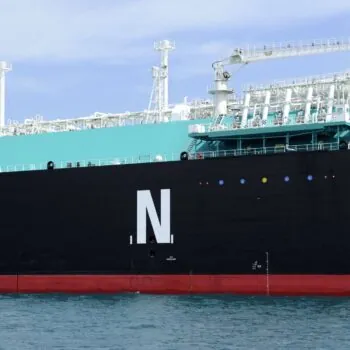The European Commission made a savvy move by publishing its vision for a climate neutral Europe by 2050 in November 2018. They opted for a slow but safe path by playing the long game. This is the Commission’s three step plan.
An offer one cannot refuse
Heads of States, Ministers and the European Parliament gave a strong mandate to the European Commission in the spring of 2018. They tasked the institution with assessing whether European countries could make deeper emission cuts by 2050. Economic assessment is one of the specialities of the European civil servants. It is also a great way to start a conversation: build a common understanding through a neutral mediator before ramping up political negotiations.
The outcome of the in-depth assessment is crystal clear: it is feasible and very much in the European Union’s interest to reach “climate neutrality” by 2050.[1]
The Commission’s services coupled positive numbers with a powerful narrative about modernising the economy. Climate neutrality is a necessary contribution to protecting Europeans from the most dangerous impacts of climate change. But it will also be positive for the economy and Europeans’ quality of life. The Commission’s strategy is after all aptly named “A European strategic long-term vision for a prosperous, modern, competitive and climate neutral economy”. Hard to object.
The stakeholders’ reaction was overall very positive. The business and investors communities hailed the Commission’s ambition[2] while sectors with high emissions have also welcomed the vision.[3]
The Commission’s work on long-term decarbonisation inspired others. Civil society organisations have developed their own modelling.[4] Economic sectors have explored the emission cuts potential in their own supply chains.[5]
The Commission put forward a positive vision of a low-carbon Europe. This vision got supported by similar analysis from stakeholders, including from those emitting the most. It was time to bring the discussion to the next level: towards a political deal.
A political deal
Member states will ultimately be responsible for endorsing climate neutrality. This is why the key political players are European leaders and Ministers. Based on recent developments, the process in the next few months is likely to take the following shape.
First encounter
Despite having requested the Commission’s assessment in the first place, European national governments could very well dismiss the proposed vision at any time, because of distraction or opposition. Therefore, every step matters. Heads of States and Governments met as early as in December 2018 and instructed their Ministers to first examine the strategic vision and the accompanying impact assessment and agreed to provide further political guidance early 2019.[6]
Technical analysis
The Romanian Presidency of the Council have scheduled debates among Ministers and their staff for the first quarter of the year.[7]
The first exchanges clarified that European member states may criticize certain assumptions used in the modelling, or dispute some of the modalities on how to reach carbon neutrality, but it is incredibly difficult to reject climate neutrality with the elements put on the table.
The shape of a deal
According to a draft agenda, the European Council of 21-22 March 2019 will provide guidance on “the overall direction and political priorities.[8] The meeting should clarify the different elements that must be agreed upon while endorsing climate neutrality, but not actually agree any of them.
Based on the first public discussions among Ministers and the conclusions recently adopted by the Foreign Affairs Council[9], these parameters should be:
- Ambition. Climate neutrality is firmly on the table, but by when and how?
- 2030. Reaching climate neutrality while maintaining the current 2030 targets will require heroic emissions cuts between 2030 and 2050. Raising the 2030 target would ease the transition but would reopen an agreement on 2030 some in the Commission consider too recent and sensitive.[10]
- Differentiation. Climate neutrality is a continent-wide objective. Member states are however likely to underline the distributional impacts of the transition and the need for differentiated support.
- Investment. Public investment will be key to enable the transition. The EU budget is a key lever and the two policy steams are likely to collide.
- Policy priorities. Some sectors will need specific strategies and/or aligned policies, notably to decarbonise the energy, industrial policy, or agricultural sectors, and repurpose research and financial policies.
- Governance. The strategic vision is a set of scenarios. It will not drive action or set a trajectory. It can be expected that the Commission should come forward with a more conventional policy roadmap.
Play the politics
The European Commission is pushing for an adoption of climate neutrality at the Sibiu Summit in May or at the European Council in October 2019.[11] None is the wiser as to the feasibility of an agreement at either of these dates.
It seems possible, however, that an adoption takes place in two stages. In May, European leaders could commit to climate neutrality and underline the importance of climate for the future of the Union as they renew their vows. The European Council would then in October formally endorse climate neutrality.
This option is the most politically interesting for three reasons.
The European elections of May 2019 will lead to a complete renewal of the European political guard. A new Commission leadership is expected to take office later this year. Its agenda will be defined by the President of the European Commission’s priorities, influenced by the political groups constituting the Parliament, and by the priorities defined by European Heads of States and Governments. The outcome of the elections will influence the importance of climate for the next Commission and the swiftness of the transition to a carbon-neutral economy. European leaders committing to climate neutrality two weeks before the elections would turn climate change into the defining issue for the next Commission.
The United Nations Secretary General is organising a summit on Climate Change in September 2019. The European Union has already used the political capital stemming from the Commission’s strategic vision at COP24 in Katowice. European leaders must be able to come to New York with a stronger commitment to climate neutrality, and some guidelines about the update of the 2030 nationally determined contribution.
Finally, a deal in October would allow for climate neutrality negotiations to culminate together with the discussion on the EU’s multiannual financial framework. The October Summit is expected to see progress on the EU’s next seven-year’s budget (2021-2027). The collision of these two elements is likely to facilitate trade-offs.
President Juncker and Commissioner Cañete have so far played their cards very well. Their political plan would allow Europe to align behind a vision for climate neutrality by 2050, shape the agenda of the next Commission, while allowing for trade-offs among files. This is a robust legacy but it might get tarnished if the European Union is not able to submit a new, more ambitious, nationally determined contribution of at least 55% emission cuts, and thus remain credible to the international community committed to the success of the Paris climate agreement.
[1] European Commission (2018), Communication “A Clean Planet for all: A European strategic long-term vision for a prosperous, modern, competitive and climate neutral economy” and European Commission (2018), In-Depth Analysis: A Clean Planet for all.
[2] See for instance Corporate Leaders Group, EU Commission presents vision for achieving a clean planet by 2050 and Institutional Investors Group on Climate Change, Investors strongly welcome today's EU 2050 climate strategy.
[3] See for instance the reaction of industry associations active in energy, transport and buildings.
[4] Climact for European Climate Foundation (2018), Net-zero by 2050: from whether to how
[5] Material Economics (2018), The Circular Economy a Powerful Force for Climate Mitigation; ETH Zurich & EPFL (2018), A sustainable future for the European cement and concrete industry; and Vrije Universiteit Brussels for the energy intensive industries federations, Industrial Value Chain: A bridge towards a carbon neutral Europe.
[7] Energy council (19/12 and 04/03), Environment council (20/12 and 05/03), Competitiveness council (18/02) and Foreign affairs council (18-19/02).
[8] European Council, annotated draft agenda for the European Council of 21-22 March 2019 (dated 11 February 2019).
[9] Foreign Affairs Council, Climate Diplomacy conclusions (18 February 2019)
[10] Climact for European Climate Foundation (2018), Net-zero by 2050: from whether to how
[11] Euractiv (2019), EU in fresh diplomatic push to ’raise global ambition’ on climate change.




